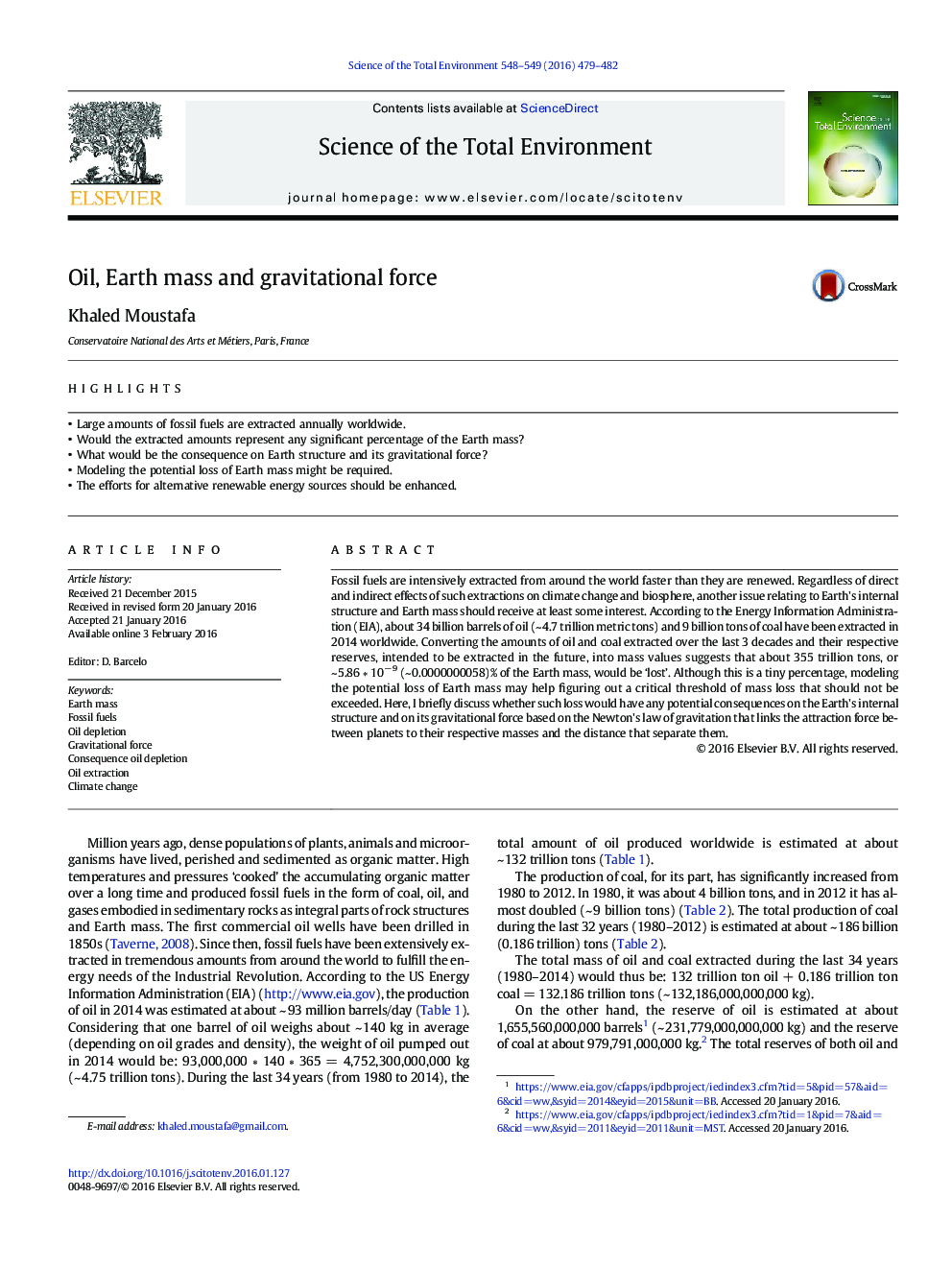| Article ID | Journal | Published Year | Pages | File Type |
|---|---|---|---|---|
| 6323393 | Science of The Total Environment | 2016 | 4 Pages |
Abstract
Fossil fuels are intensively extracted from around the world faster than they are renewed. Regardless of direct and indirect effects of such extractions on climate change and biosphere, another issue relating to Earth's internal structure and Earth mass should receive at least some interest. According to the Energy Information Administration (EIA), about 34 billion barrels of oil (~ 4.7 trillion metric tons) and 9 billion tons of coal have been extracted in 2014 worldwide. Converting the amounts of oil and coal extracted over the last 3 decades and their respective reserves, intended to be extracted in the future, into mass values suggests that about 355 trillion tons, or ~ 5.86 â 10â 9 (~ 0.0000000058)% of the Earth mass, would be 'lost'. Although this is a tiny percentage, modeling the potential loss of Earth mass may help figuring out a critical threshold of mass loss that should not be exceeded. Here, I briefly discuss whether such loss would have any potential consequences on the Earth's internal structure and on its gravitational force based on the Newton's law of gravitation that links the attraction force between planets to their respective masses and the distance that separate them.
Related Topics
Life Sciences
Environmental Science
Environmental Chemistry
Authors
Khaled Moustafa,
